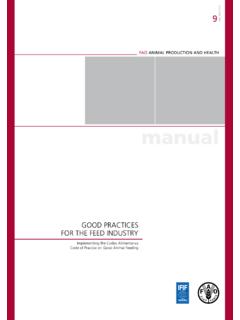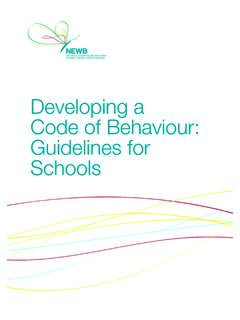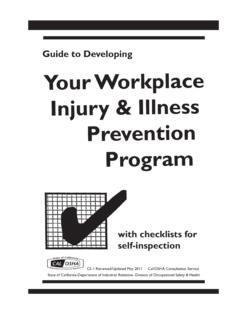Transcription of Developing and implementing a low-level concerns policy: …
1 2020 Developing and implementing a low-level concerns policy: A guide for organisations which work with childrenSafeguarding Unit, Farrer & Co (Adele Eastman, Jane Foster, Owen O Rorke and David Smellie), Marcus Erooga, Katherine Fudakowski and Hugh Davies QC29 July 2021 PLEASE NOTE: in light of changes made to the DfE s revised KCSIE for September 2021, and with a further revised version having been published today, we are currently making changes to our low-level concerns Guidance. Please continue to monitor this link closely - the revised Guidance will be published as soon as possible and in advance of the revised version of KCSIE going live in September 2021.
2 In the meantime, we would encourage you to read through the current version of our Guidance if you have not already done so, as many of the principles will remain the Organisational culture is a slippery concept often referred to but rarely defined. It is culture, however, that sets the context and expectations of all behaviour in an organisation, and a positive culture where concerns can be identified and spoken about openly is a key element of a strong safeguarding system. What that means in practice is that ensuring that all those who work with children behave appropriately, and the early identification and prompt and appropriate management of concerns about adults, is critical to effective Creating a culture in which all concerns about adults (including where the threshold for an allegation is not met) are shared responsibly and with the right person, and recorded and dealt with appropriately, is crucial.
3 If implemented well this should encourage an open and transparent culture; enable organisations to identify concerning, problematic or inappropriate behaviour early; minimise the risk of abuse; and ensure that adults working for or with the organisation are clear about professional boundaries and act within them, in accordance with the ethos and values of the Behaviour which is not consistent with the standards and values of an organisation, and which does not meet the organisational expectations encapsulated in their code of Conduct, needs to be Such behaviour can exist on a wide spectrum from the inadvertent or thoughtless, through to that which is ultimately intended to enable abuse.
4 Where a concern about an individual s behaviour reaches the threshold of an allegation, clear guidance exists (as referred to below) on how organisations should report, record and manage Where a concern falls below that threshold the position is much less clear. Following Farrer & Co s role as Secretariat to Hugh Davies QC on his independent review in 2014 arising from the criminal conduct of William Vahey at an international school (the Davies Review),3 and one of his principal recommendations regarding neutral notifications, Farrer & Co has assisted a number of schools with introducing a formal written policy on sharing low-level concerns (as we now call them), or neutral notifications (as some others refer to them), regarding an adult s behaviour towards children.
5 We have also been aware that whilst some schools (and other organisations) may not have introduced a formal policy, they may nonetheless encourage an approach to sharing low-level concerns /neutral We, together with Hugh Davies QC, Marcus Erooga and Katherine Fudakowski, believe based on empirical evidence and our respective experience that there is considerable potential in this contextto create a safer environment for children, and thatthere is a need for a revised national approach inorganisations which work with children across allsectors including, for example, schools, charities,and sports organisations.
6 If this is not adopted,such organisations risk enabling the creation offurther victims through missed opportunities toidentify and effectively intervene in concerning,problematic or inappropriate This guidance draws on the following to explain how organisations which work with children can develop and implement a written low-level concerns policy, as part of a culture that enables staff to share any concerns no matter how small, and how these organisations should respond to them: our experience, inquiries, serious case reviews,and published research including, for example,that of Marcus Erooga, who considered commonfactors in organisational child sexual abuse in areview of 20 serious case reviews relating to suchabuse in the UK from 2010-2016 (as referred to inmore detail on page 4).
7 And recent research undertaken by the SafeguardingUnit at Farrer & Co, in conjunction with MarcusErooga, which involved us designing two versionsof a questionnaire one for schools at whichan approach is being taken to sharing low-levelconcerns/neutral notifications (approach), andanother for schools at which a formal policy existson sharing low-level concerns /neutral notifications(policy). A total of 18 schools responded 13 ofwhich completed the approach questionnaire,and 5 completed the policy questionnaire (ourresearch). Whilst we consider the data obtainedto be valuable, we are mindful that there arelimitations in terms of the methodology used including the fact that it is a small sample, and thatthere are a number of potential biases.
8 Furtherinformation on the research and data collated canbe found in Appendix We recognise that there is some resistance within the safeguarding field to the concept of anything being a low-level concern; however, we use it 1 As referred to later in this guidance, the code of Conduct will ideally be informed by the following: Safer Recruitment Consortium (2019) Guidance for safer working practice for those working with children and young people in education settings (GSWP), accessed on 8 October, 2019 at HM Government (2018) Working Together to Safeguard Children: A guide to inter-agency working to safeguard and promote the welfare of children (WTSC), accessed on 8 October, 2019 at.
9 Department for Education (2019) Keeping Children Safe in Education: Statutory guidance for schools and colleges (KCSIE), accessed on 8 October, 2019 at ; and, for example, London Child Protection Procedures (LCPP), Part A, Chapter 7, accessed on 8 October, 2019 at Davies, H. (2014) Southbank International School Independent Review arising from the criminal conduct of William Vahey: Interim Report, London, Farrer and Co, LLP; and Davies, H. (2014) Southbank International School Independent Review arising from the criminal conduct of William Vahey: Final Report, London, Farrer and Co, LLPD eveloping and implementing a low-level concerns policy: A guide for organisations which work with children1as a clear and comprehensible term to neutralise the act of sharing a concern which neither meets the allegation threshold set out below, nor is otherwise serious enough to consider a referral to the LADO.
10 We believe that such straightforward and comprehensive shorthand is both necessary and effective in Whilst we consider a written low-level concerns policy to be an important part of the suite of safeguarding policies that exists at an organisation which works with children, its successful introduction will be a process rather than an event. Having the confidence of all staff that it will, in practice, be used in the way the policy describes will be a key part of ensuring it is implemented and used successfully. A starting point for any organisation is realistically to assess its own organisational culture, and consider whether it is currently conducive to introducing such a policy and, if not, what action it needs to take to reach that position.











